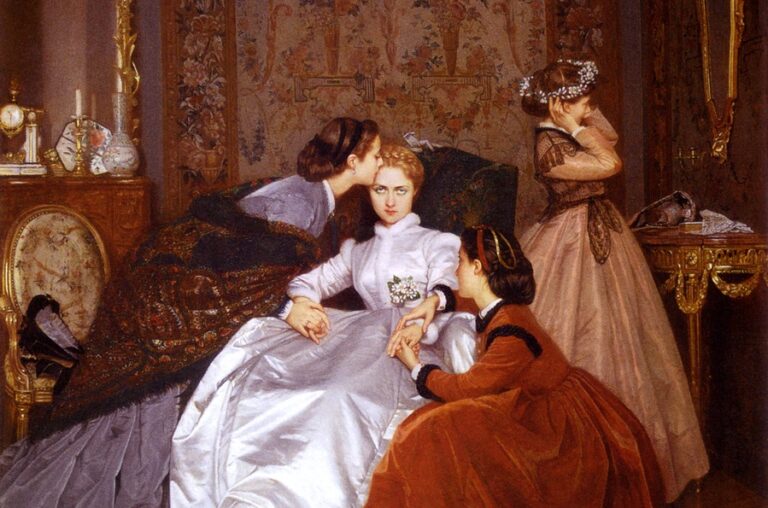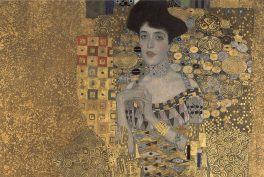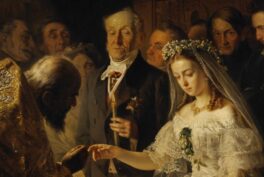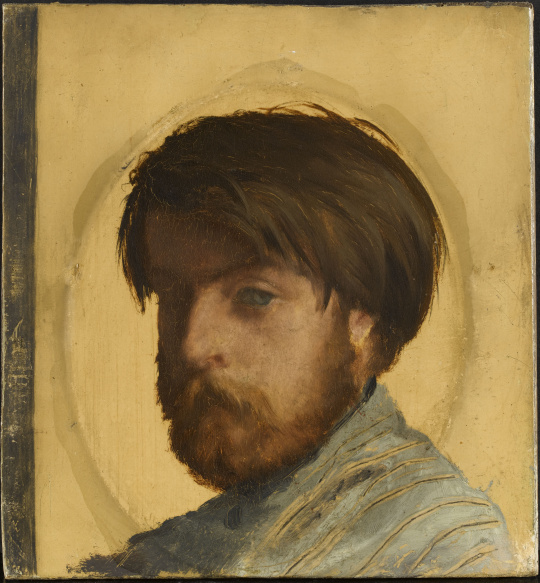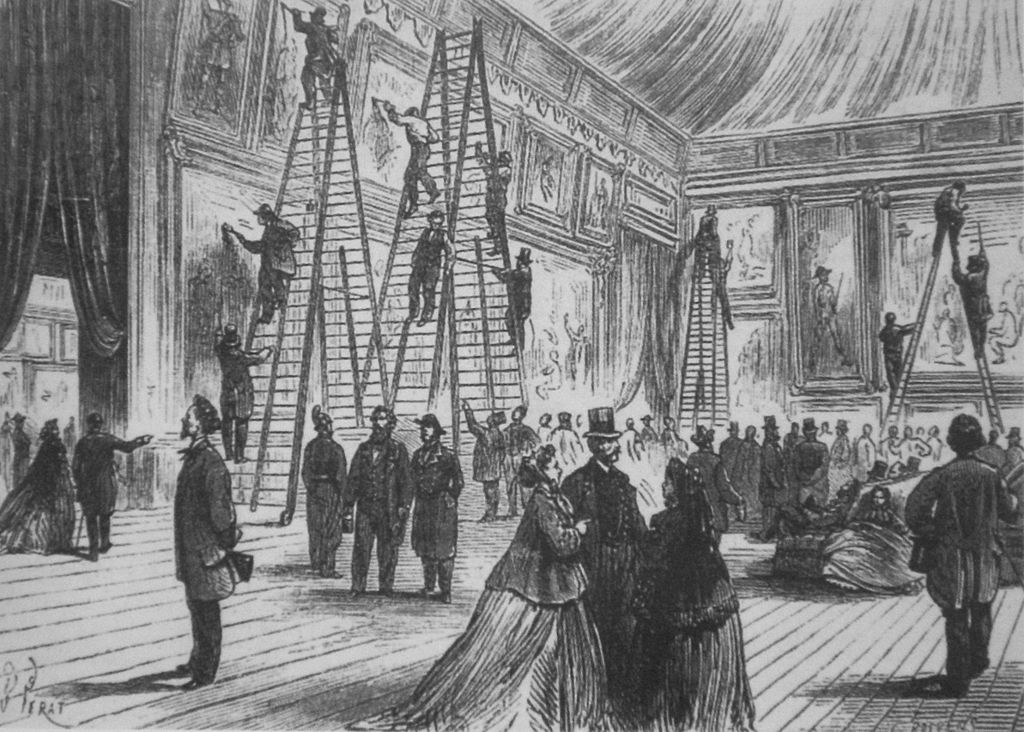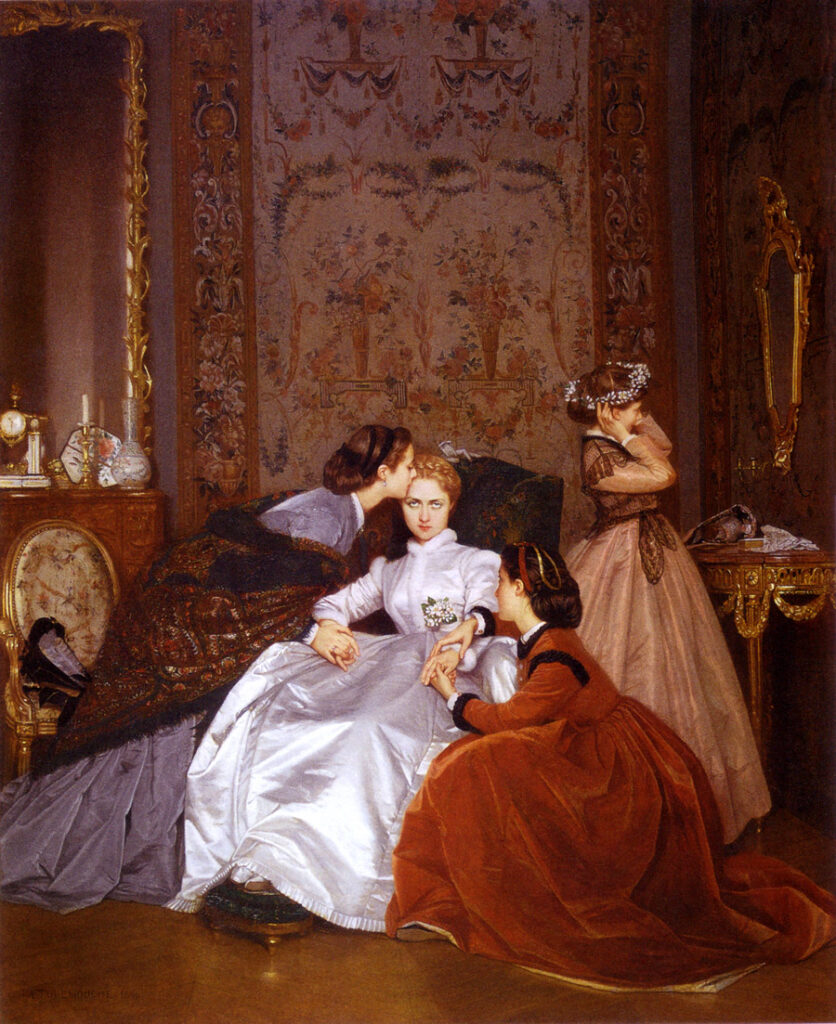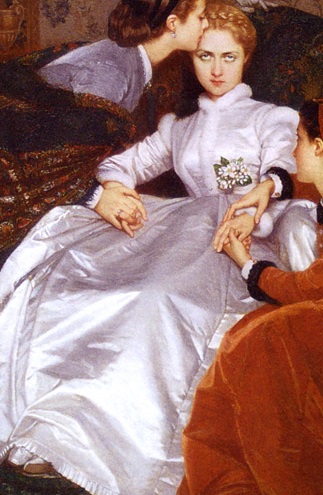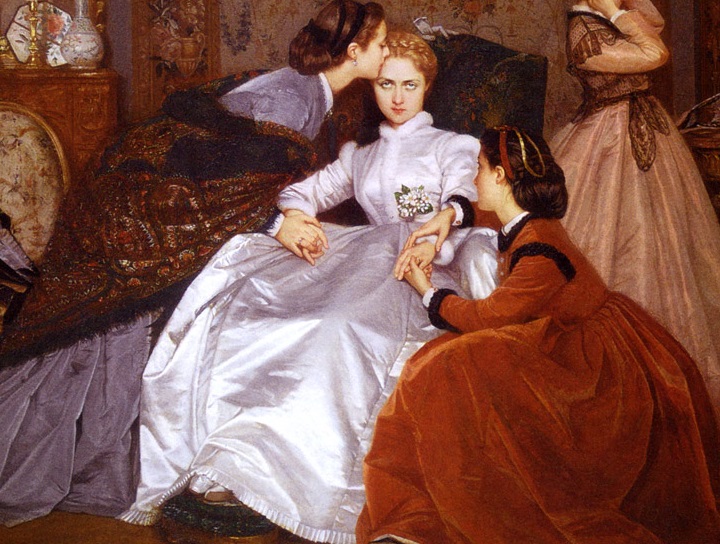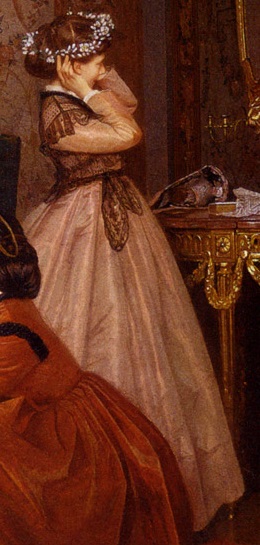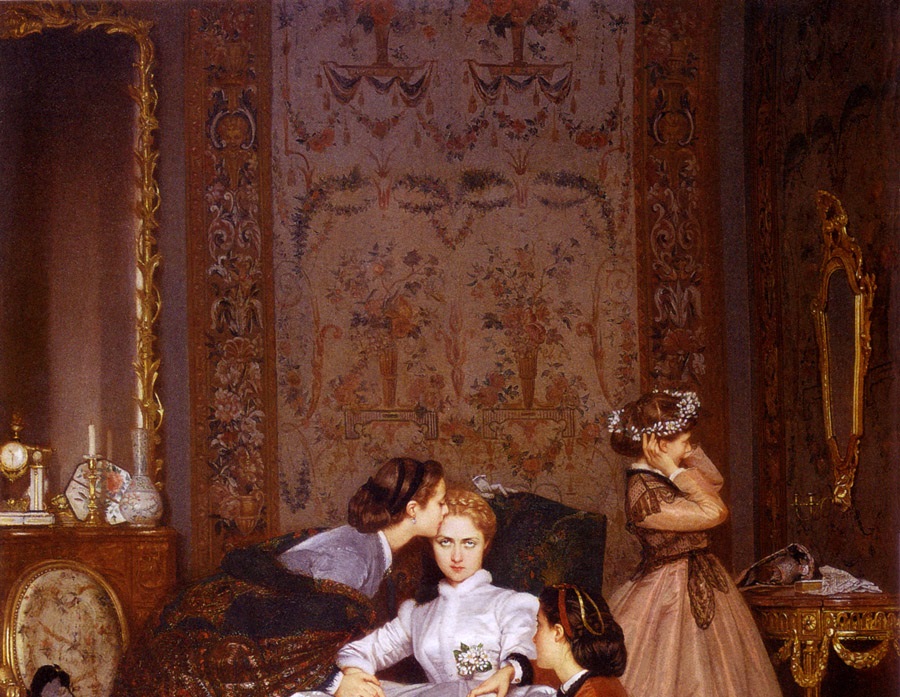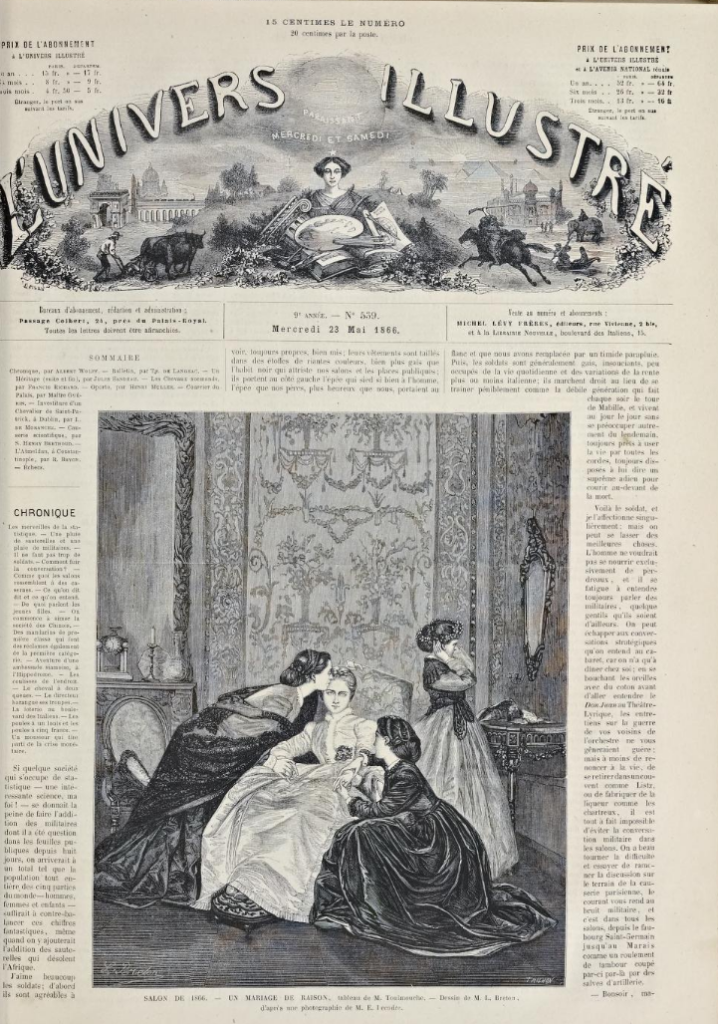The Company
Despite the clear annoyance of the bride, she has two friends next to her to console her. Are they her sisters or just friends?
On her right, the woman kissing her temple wears a purple silk dress, although not as shiny as the bride’s, and a brown dorman, or shawl, with embroidered patterns. On her left, another one kneels and holds her other hand. She wears a red velvet dress with black fur.
Innocence
Toulmouche added a fourth girl in a pink silk dress. Her character adds a feeling of melancholy to the scene. Could it be the bride’s younger sister? She does not seem aware of the struggles of the bride. On the contrary, she admires her flower crown on the mirror to the right.
Maybe she is fantasizing about her wedding day, ignorant of all the social obligations that surround it that have nothing to do with love. Eventually, she will learn about them.
The Bride’s Room
Around them, we see details of a luxurious room, possibly the bride’s. On the left, there is a mirror with a golden frame, a clock, a candle, and a jar. There is also a chair with embroidered cushions.
Behind them, there is a tapestry with floral designs that frame the group. This was a common element of interior design in the 19th century.
Interpretation
On May 23rd, 1866, Toulmouche’s bride was featured on the cover of L’Univers Illustrée. The original title in French was Le Mariage de Raison (The Marriage of Convenience). Clearly, this wedding was not the bride’s choice. As an upper-middle-class woman, she could not guide her decisions with her heart. Her future depended on relationships that benefited her family’s social status. Most likely, her parents arranged it without even consulting her, hence her annoyance and anger.
In 1866, Félix Jahyer, a French journalist and art critic, published his account of the Salon. In it, he included an interpretation of Toulmouche’s The Reluctant Bride. This is quite a romantic description of the painting:
Critical Reception
The comments against Toulmouche’s frivolous paintings continued with The Reluctant Bride. But even then, critics noticed something different in this one.
Modern Female Rage
Dubois was not wrong. The painting has lived on to our days. Today, it has become a symbol of female rage. If 19th-century critics did not use “rage” to describe the bride’s feelings, it may have been because that was not an emotion that women should feel. However, today we can talk about it and empathize with her.
